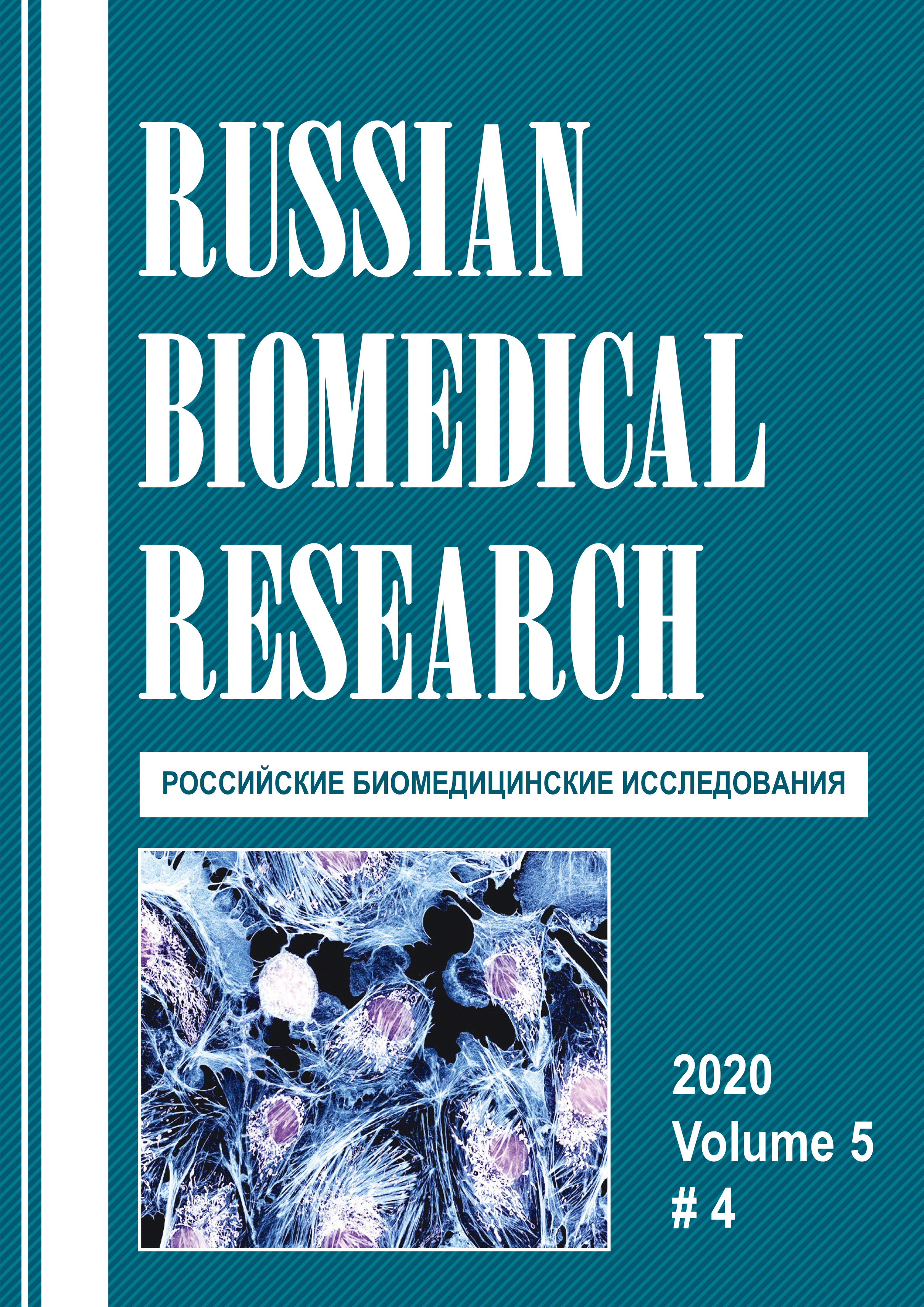EXPERIMENTAL MODEL OF INDUCED LABOR IN CHRONIC PLACENTAL INSUFFICIENCY
Abstract
An experimental model for simultaneous registration of induced uterine contractile activity, electrocardiogram (ECG) of the female and fetuses developing intact in one horn and in conditions of reduced placental circulation in the other in chronic experience on female rabbits was developed. The model includes three stages. The first stage (on the 18th day of pregnancy) was to produce placental insufficiency by ligation of one third pre placental vessels in one horn of the uterus, the other horn remained intact. It allowed us to compare reactions of normally developed and growth retarded fetuses. The second stage (28th day of pregnancy) was to register electromyography by electrodes insertion into the myometrium. Besides, for mechanohysterography an original sensor around the vaginal part of the uterus was placed and for electrocardiography electrodes were introduced into the muscles of interscapular region of normally developed and growth retarded fetuses. During the third stage (30th day of pregnancy) labor contractions of the uterus were induced by injecting of 1 IU oxytocin into an auricular vein of the female. Simultaneous registration of the uterine contractile activity and electrocardiograms of the female and its fetuses was performed. Approbation of the model was made on 16 female rabbits and 28 their fetuses, 14 of which developed in conditions of undisturbed placental circulation (intact fetuses) and 14 - in conditions of chronic placental insufficiency (experimental fetuses). It was shown that oxytocin induced contractile activity of the uterus was different depending on a degree of the female biological readiness for delivery: in 8 females labor occurred and in 8 females did not. In the intact and growth retarded fetuses there were observed the fetal heart rate reactions, characteristic for those which develop in such fetuses during delivery in clinical situations. This model may be considered adequate for studying pathogenesis of the labor activity anomalies and intranatal hypoxia, as well as for preclinical approbation of the influence of various medicinal preparations on contractile activity of the uterus and on the functional state of the fetuses during labor.



